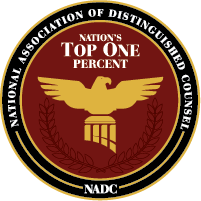Rideshare accidents create a uniquely complex liability puzzle that differs significantly from conventional auto collisions. When an accident involves an Uber or Lyft vehicle, determining who bears financial responsibility involves navigating through multiple insurance policies, understanding the driver’s status at the time of the crash, and identifying how state laws apply to these relatively new transportation services. This complexity often leaves injured parties uncertain about where to turn for compensation during their recovery.
At Hollis Law Firm, we help clients navigate the complicated aftermath of rideshare accidents in Kansas and Missouri. Understanding the intricate liability framework surrounding these cases is essential for securing fair compensation for medical expenses, lost wages, and other damages resulting from a rideshare collision.
The Rideshare Driver’s Status Determines Primary Liability
The most critical factor in determining liability after a rideshare accident is the driver’s status within the app at the time of the collision. Rideshare companies have created a three-phase system that directly impacts which insurance coverage applies:
Phase 1: App Off
When a rideshare driver is not logged into the app, they are considered a private individual using their personal vehicle. During this phase, the driver’s personal auto insurance provides the only coverage, the rideshare company bears no liability, and claims are handled like any other private auto accident.
Phase 2: App On, Waiting for a Ride Request
When the driver is logged into the app but hasn’t yet accepted a ride request, they enter a liability gray area where limited coverage applies. The driver’s personal insurance may apply, but many personal policies specifically exclude commercial use. Rideshare companies typically provide limited liability coverage during this phase (usually $50,000 per person for bodily injury).
Phase 3: En Route to Pickup or During Trip
Once a driver accepts a ride request and is either en route to pick up a passenger or has a passenger in the vehicle, rideshare companies provide their full commercial insurance policy, typically $1 million in liability coverage.
Multiple Parties May Share Liability
Beyond the rideshare company’s tiered insurance structure, several parties might bear full or partial liability for a rideshare accident:
- The rideshare driver, if their negligence caused the accident through distracted driving, speeding, fatigue, or unfamiliarity with routes
- The rideshare company, in cases of negligent hiring, inadequate training, or app design that encourages unsafe driving
- Other motorists who may have caused the collision with the rideshare vehicle
- Vehicle manufacturers or maintenance providers, if defects or improper repairs contributed to the accident
Identifying all potentially liable parties requires a thorough investigation and understanding of the complex legal relationships in rideshare operations.
Special Considerations for Different Injured Parties
The path to compensation after a rideshare accident varies depending on your role in the incident:
Rideshare Passengers
As a passenger, you generally have the strongest claim position. You bear no responsibility for causing the accident, can typically make claims against all potentially liable parties, and are covered by the rideshare company’s $1 million liability policy regardless of who caused the accident.
Other Motorists
If you’re driving your own vehicle and are hit by a rideshare driver, your claim path depends on the rideshare driver’s app status, which party was at fault, your state’s insurance laws, and your own insurance coverage.
Pedestrians and Cyclists
Pedestrians and cyclists face similar considerations to other motorists, but may have additional challenges due to more severe injuries and potential questions about their actions.
Steps to Take After a Rideshare Accident
If you’re involved in a rideshare accident, taking proper steps immediately afterward can significantly impact your ability to establish liability and recover damages. Seek medical attention, report the accident through the rideshare app, document the scene, and contact an attorney experienced with rideshare accidents.
Contact a Rideshare Accident Attorney
The multi-layered insurance coverage and complex liability questions in rideshare accidents often require specialized legal knowledge to navigate successfully. Insurance companies may attempt to shift responsibility to other parties, leaving injured victims caught in the middle of disputes.
At Hollis Law Firm, we have helped clients recover over $100 million in settlements and judgments. Our attorney understands the unique challenges of rideshare accident cases and works to identify all potentially liable parties to maximize your compensation. If you’ve been injured in a rideshare accident, call us at (800) 701-3672 or complete our contact form to discuss your case.



